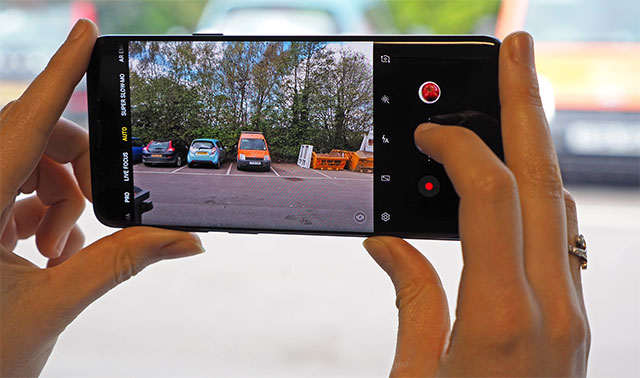Don't buy a phone because of the 'dotted' camera, here's why!
The competition over processing power or screen resolution in the smartphone world has really cooled down, now is the era when companies compete with each other by the 'number of dots' on the camera as well as the quality of photos. This trend is being led by a series of Android giants such as Oppo, Huawei, Samsung, or Xiaomi.
While 'photo quality' is a factor that is more about emotions and personal opinions, 'megapixel' is a specific quantitative number, easier to put on the scale for comparison. That is also the reason why companies are focusing their advertising very strongly on this aspect, even causing many people to misunderstand and consider this an important factor in choosing to buy a smartphone.
After all, with today's smartphones, we can take stunning photos and videos to share with the world. But when it comes to camera megapixels, it's important to remember that more is not always better. In fact, there are several reasons why you shouldn't buy a smartphone based on its camera's megapixel count alone.

Megapixels don't tell the whole story
Megapixel is a quantity that refers to the resolution of an image that a camera can capture, with one megapixel equal to one million pixels. While it's true that more pixels can produce a sharper image, the difference becomes less noticeable in certain situations. For example, a 12MP camera and a 48MP camera may not produce significantly different images in everyday use, especially on a smartphone screen or even a standard computer screen. Higher resolution is mainly beneficial for large prints or extreme enlargements, which most users rarely need.
Sensor size is more important than megapixels
The most important component of a smartphone camera is the image sensor. This small chip captures light and converts it into an image. A larger sensor size lets in more light, resulting in better low-light performance, improved dynamic range, and richer color accuracy.
For example, the Apple iPhone and Google Pixel product lines are both known for their exceptional camera performance, using sensors that emphasize quality over megapixel count. Despite having a lower megapixel count than some competitors, iPhone and Pixel consistently deliver superior real-world photography thanks to the advanced sensor technology they feature.
Lens quality and aperture
Another important factor that determines the performance of a smartphone camera is the lens quality and aperture size. Lenses focus light onto the sensor, and higher quality lenses can minimize distortion and aberrations. Meanwhile, aperture (usually expressed as f/ numbers such as f/1.8, f/2.2) controls the amount of light reaching the sensor.
A lower f-number means a larger aperture, allowing more light to hit the sensor, which is especially beneficial in low light conditions. Even a 108MP camera with a small sensor and narrow aperture can have difficulty taking photos in low light, resulting in grainy images.

Image processing
What happens after the photo is taken is equally important. Modern smartphones rely heavily on post-processing algorithms to improve the quality of photos that end up in the hands of users. These algorithms handle everything from noise reduction to HDR processing, color correction, and even computational photography techniques like night mode or portrait mode.
For example, Apple's iPhone is famous for its image processing capabilities, consistently delivering high-quality photos even with lower megapixel counts. This shows that the camera's software can be as important as the device's hardware.
Conclude
While megapixels are an essential aspect of a smartphone camera, they are not the most important factor in determining image quality. A great smartphone camera setup with a good sensor, quality lens, and powerful image processing software, will always result in better photos than just relying on a high megapixel count.
When choosing your next smartphone, consider the entire camera system and its performance in real-world situations rather than just being influenced by megapixel count. That way, you'll likely end up with a device that offers a more versatile, reliable, and enjoyable photography experience.
You should read it
- How to set up security cameras that can be accessed remotely
- Camera wifi - New trends in 2019
- What to consider when buying surveillance cameras for families
- Things to know before choosing to buy a Wi-Fi camera system
- What is ip camera? Which IP camera is good?
- Trick to use Camera application on Galaxy S8
 How to keep home security cameras safe?
How to keep home security cameras safe? Can I take photos of moving objects on a smartphone?
Can I take photos of moving objects on a smartphone? Top 5 best cameras for online meetings today
Top 5 best cameras for online meetings today Formula to adjust standard, beautiful backlit photos on iPhone
Formula to adjust standard, beautiful backlit photos on iPhone Things to consider before buying a security camera for your home
Things to consider before buying a security camera for your home Top 5 best cheap DSLR cameras of 2024
Top 5 best cheap DSLR cameras of 2024